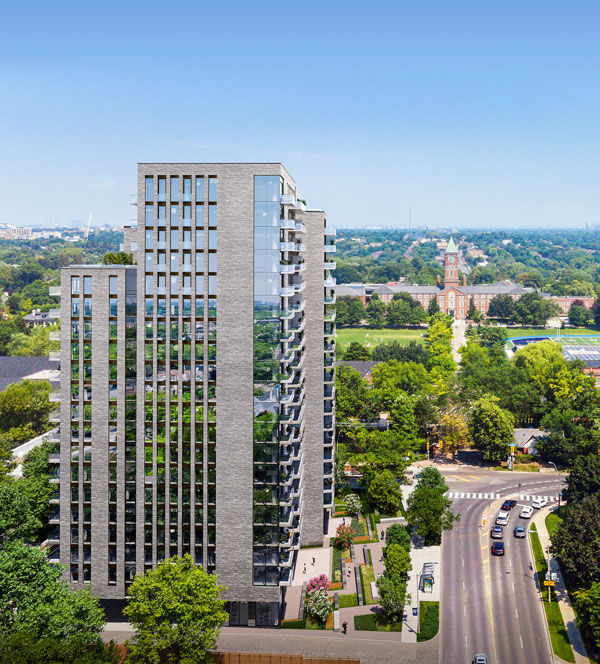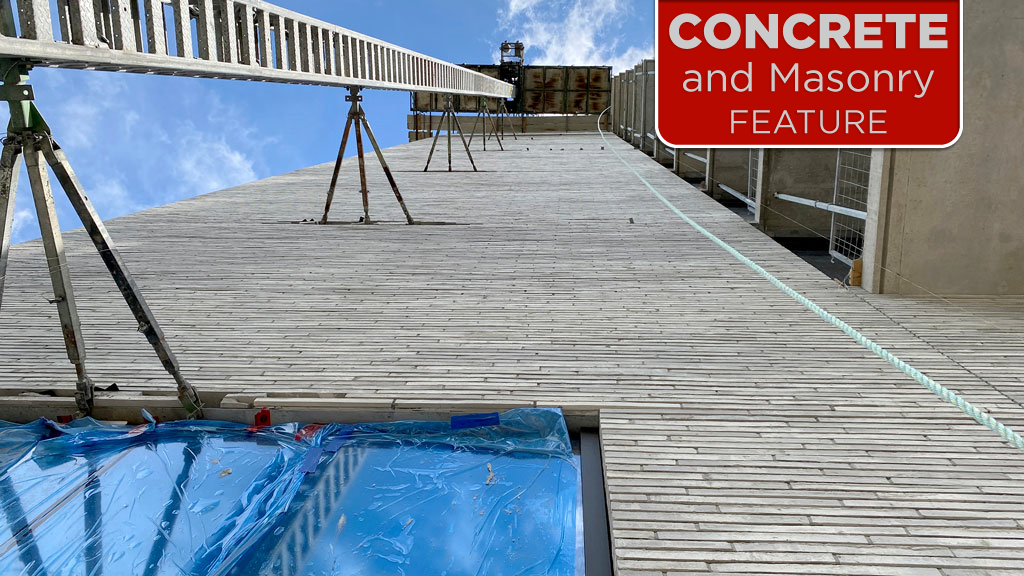The pinwheel-shaped 2Fifteen tower being built on Lonsdale Road in Toronto’s Forest Hill community will be clad with a rarely used brick in Canada imported from Denmark.
The tower was designed by Diamond Schmitt, developed by DBS Developments/Preston Group, and is being erected by construction manager Reliance Construction Toronto. This 129-suite, 20-storey luxury rental building will not be a standard tower in its design, appearance, style of construction, and use of brick, say the project partners.
Manufactured by the Broager Denmark-based Petersen Tegl Company, the K91 Kolumba is a long-proportioned brick that requires the use of less brick on buildings. Still, more than 211,000 of the bricks will have been installed by masonry subcontractor Limen Group by the time construction is completed later this year.
“We believe this will be the first high rise building in Canada to use it (the brick), says Preston Group CFO Bryan Levy.
“This will be the first purpose built luxury rental building in Toronto in quite a long time,” says Levy, in explaining why the company has invested the time and expense of sourcing and importing the bricks which cost approximately $7 apiece.
A major target market for the tower are Forest Hill residents who want to downsize from their homes and move into a luxury building, without the complications and investment condo ownership entails, he explains.
As part of his research, he travelled to Denmark and met with the Petersen Tegl Company owner and also went to New York City with senior representatives from the architectural and contracting firms to inspect buildings in that city where the brick has been used.
In highlighting the features of the bricks, he references the stripes of bricks and windows on the south facade as one aspect of their striking application. The stacked brick piers on that elevation and between the balcony windows on the other elevations are precisely measured to fit one, 528-mm-long Kolumba brick.
Accented with oversized floor to ceiling windows with defining bronze anodized aluminum frames, the light buff coloured bricks will provide a unique appearance for the building, which is set from the street to reduce its scale, says Diamond Schmitt associate architect, Persis Lam.
The architectural firm worked with the developer on the selection of the bricks as part of the three-year-long design process, she points out.
“Each brick is different. You can even see the thumbprint (of the brick maker) on them,” says the architect, referring to photos that were forwarded by the manufacturer.
But it’s not just the handmade nature of the bricks which sets the project and the building apart from others in the city. In what might be described as return to old-style construction practices, masonry subcontractor Limen Group is hand installing the bricks all the way from the ground to the 20th floor using scaffolding and a swing stage.
“It (the brick) is a labour intensive material to install and maintaining uniform workmanship the entire height of the building is important,” says Lam, citing one of the challenges.
Another is the need for tight supply co-ordination. The bricks have to be delivered to the work area on as-needed basis as there is not enough space on site to store them all.
Touching on the aspects of the project, Lam says the developer worked with the neighbourhood residents and the city to ensure the tower would be compatible with the area. The project is targeted to LEED Silver and the Toronto Green Standard and scheduled for occupancy in early 2022.





Recent Comments